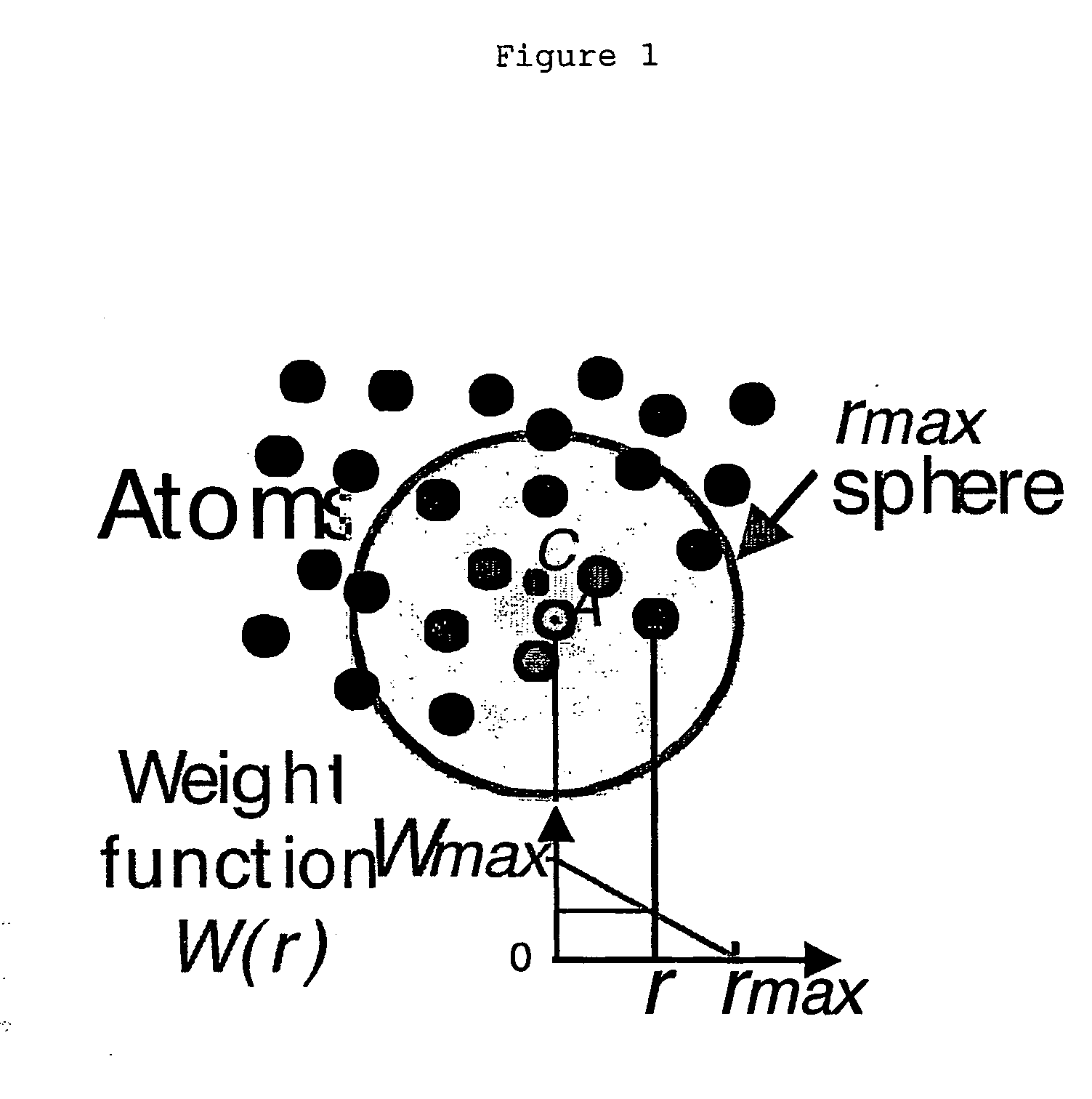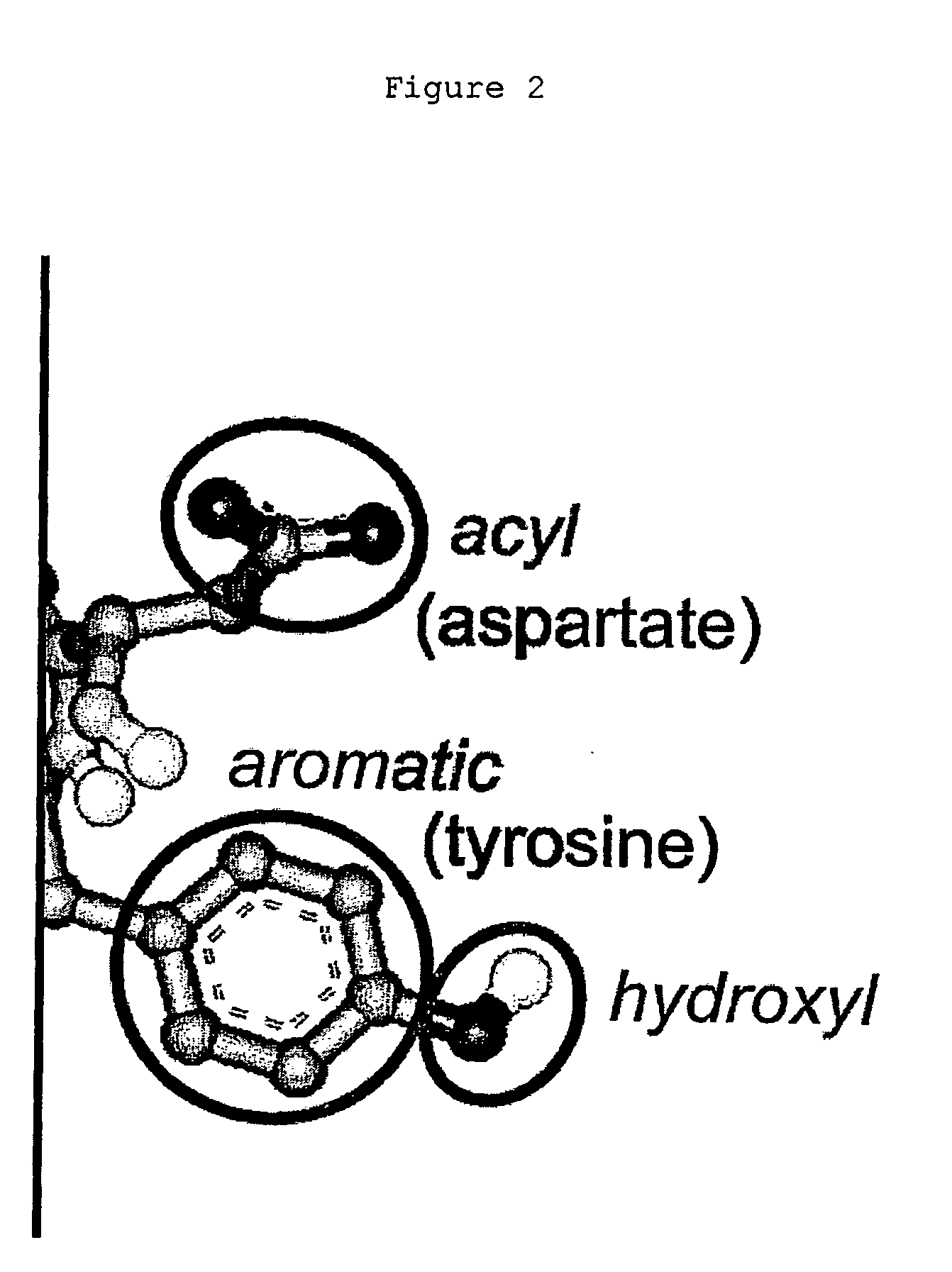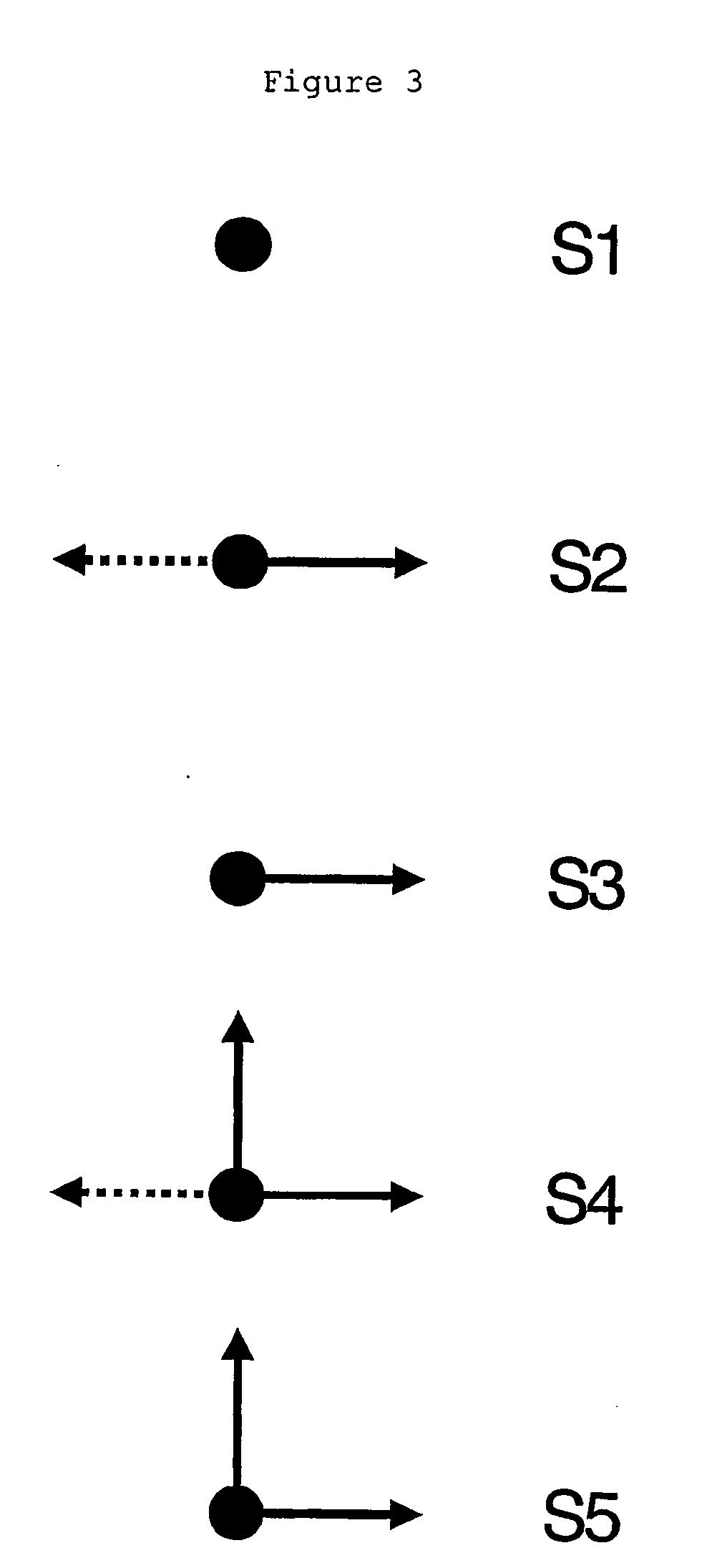Process for identifying similar 3D substructures onto 3D atomic structures and its applications
a technology of atomic structure and substructure, applied in the field of macromolecules, can solve the problems of limiting the processing, unable to solve the problem of inferring biological function from 3d structure of proteins, and few methods to combine chemical information and geometry in an efficient manner
- Summary
- Abstract
- Description
- Claims
- Application Information
AI Technical Summary
Problems solved by technology
Method used
Image
Examples
example 1
Structural Similarities Among Serine Proteases
[0221] Subtilisin and γ-chymotrypsin are endoproteases sharing a similar catalytic site: both mechanisms use catalytic triad formed by an aspartate, a histidine and a serine. These proteins do not share either sequence similarity or similar fold in spite of their highly similar active sites. FIG. 8 shows that the position of these residues has neither the same position nor the same order within the sequence, making it irrelevant to align their sequences. Structures 1 SBC of subtilisin and 1AFQ of γ-chymotrypsin have been compared in accordance with aspects of the invention. The resulting file is shown in FIG. 9 and displays one similar region that consists of the catalytic triad (Asp32 / Asp102, His64 / His57, Ser221 / Ser195) represented but four chemical groups, plus a glycine (Gly127 / Gly216) which is also known to play a role in protease activity [18].
example 2
Structural Similarities Between Legume Lectins
[0222] The structural family of legume lectins is represented by 106 structures publicly available in the PDB.
[0223] Many of them are functional lectins, i.e. proteins that bind oligosaccharides non-covalently, but some of them have lost the capability to bind sugar at this site in spite of their overall sequential and structural similarity (see [19] for a full review on lectins). Proteins without native sugar-binding ability are arcelin and α-amylases inhibitors (4 structures). Seven structures are available of demetallized lectins, i.e. lectins whose site has been deprived of Ca 2+ and Zn 2+. For example, 1DQ1 and 1DQ2 are 2 structures of concanavalin A in both native and demetallized forms: though their sequences are identical and their backbone have an RMSD of 0.9 Å for α-carbons, only the first form binds a sugar 3D atomic structure.
[0224] Structure 2PEL of the peanut lectin has been used to represent a functional lectin: its si...
PUM
| Property | Measurement | Unit |
|---|---|---|
| Structure | aaaaa | aaaaa |
| Density | aaaaa | aaaaa |
| Volume | aaaaa | aaaaa |
Abstract
Description
Claims
Application Information
 Login to View More
Login to View More - R&D
- Intellectual Property
- Life Sciences
- Materials
- Tech Scout
- Unparalleled Data Quality
- Higher Quality Content
- 60% Fewer Hallucinations
Browse by: Latest US Patents, China's latest patents, Technical Efficacy Thesaurus, Application Domain, Technology Topic, Popular Technical Reports.
© 2025 PatSnap. All rights reserved.Legal|Privacy policy|Modern Slavery Act Transparency Statement|Sitemap|About US| Contact US: help@patsnap.com



